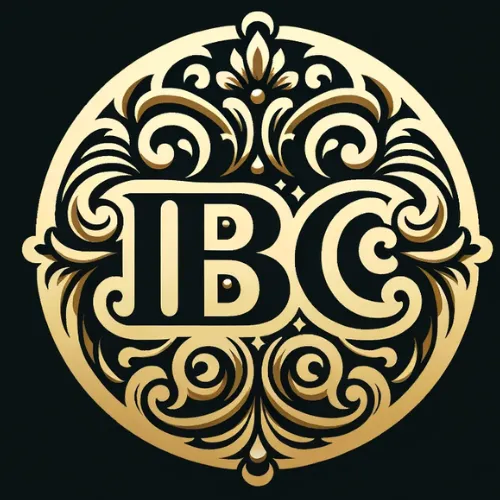
Strategic Thinking: A Nine Step Approach to Strategy...
Strategic Thinking: A Nine Step Approach to Strategy and Leadership for Managers and Marketers

The book is a comprehensive guide for managers and marketing teams to develop and implement market-led strategies. It is structured into two main parts: Strategic Leadership and Strategic Thinking, with a focus on practical application through a nine-step approach (the 9S© Approach). Here are the key points:
Strategic Leadership:
Emphasizes the importance of strategic leadership and brain-based communication.
Highlights the need for managers to think clearly and strategically, especially in turbulent times.
Discusses the role of empathy, memory, and conversational thinking in leadership.
Strategic Thinking:
Introduces the 9S© Approach, a nine-step method to create, present, and implement market-led strategies.
Steps include gathering strategic intelligence, assessing strategic capability, creating strategic knowledge, making strategic predictions, developing strategic vision, creating strategic options, taking strategic decisions, creating and communicating market-led strategy, and planning and managing projects to implement change.
Emphasizes the importance of continuous learning and adaptation.
Implementation and Change Management:
Discusses the importance of project management in implementing strategic changes.
Highlights the need for clear communication, regular updates, and managing resistance to change.
Provides practical tools and techniques for strategic planning and project management.
Case Studies and Practical Examples:
Includes case studies and examples of effective strategic actions taken by managers and marketers during economic crises.
Offers insights into how strategic leaders can navigate and leverage turbulent times to their advantage.

Standard Operating Procedure (SOP) for Implementing Strategic Leadership and Marketing Strategies
Objective:
To help a leader become more influential, a better leader, and an effective marketer by implementing strategic leadership and market-led strategies.
Scope:
This SOP applies to all leaders and managers responsible for strategic planning and marketing within the organization.
Procedure:
Develop Strategic Leadership Skills:
Empathy and Communication: Engage in regular one-on-one conversations with team members to understand their perspectives and build trust.
Memory and Recollection: Use memory aids and regular reviews to keep track of strategic goals and progress.
Conversational Thinking: Foster a culture of open dialogue and feedback to encourage innovative thinking and problem-solving.
Implement the 9S© Approach:
Step 1: Gather Strategic Intelligence:
Collect data on market trends, customer needs, and competitor activities.
Use a variety of sources, including sales staff, market research, and industry reports.
Step 2: Assess Strategic Capability:
Conduct a SWOT analysis to identify strengths, weaknesses, opportunities, and threats.
Evaluate the organization’s resources, skills, and capabilities.
Step 3: Create Strategic Knowledge:
Synthesize the gathered intelligence and capability assessments into actionable insights.
Use tools like strategic maps and models to visualize the information.
Step 4: Make Strategic Predictions:
Forecast future market trends and potential challenges.
Develop scenarios and contingency plans for different market conditions.
Step 5: Develop Strategic Vision:
Create a clear and optimistic vision for the future.
Set motivating milestones and review points to track progress.
Step 6: Create Strategic Options:
Brainstorm and evaluate various strategic options.
Use creative thinking techniques to generate innovative ideas.
Step 7: Take Strategic Decisions:
Assess the feasibility, impact, and risks of each option.
Make informed decisions based on a combination of rational analysis and intuition.
Step 8: Create and Communicate Market-Led Strategy:
Develop a comprehensive strategy document outlining the chosen strategic changes.
Communicate the strategy clearly to all stakeholders, emphasizing the benefits and expected outcomes.
Step 9: Plan and Manage Projects to Implement Change:
Develop detailed project plans for each strategic initiative.
Assign responsibilities, set timelines, and allocate resources.
Monitor progress regularly and adjust plans as needed.

Manage Change Effectively:
Overcome Resistance: Identify potential resistors and address their concerns through persuasion, negotiation, and delegation.
Regular Communication: Keep all stakeholders informed about the progress and impact of strategic changes.
Training and Support: Provide training and support to employees to help them adapt to new processes and systems.
Continuous Improvement:
Review and Reflect: Regularly review the outcomes of strategic initiatives and reflect on lessons learned.
Adapt and Evolve: Be prepared to modify strategies based on new information and changing market conditions.
Encourage Innovation: Foster a culture of continuous improvement and innovation within the organization.
Responsibilities:
Leaders and Managers: Responsible for developing and implementing strategic plans, communicating effectively, and managing change.
Marketing Team: Responsible for gathering market intelligence, developing marketing strategies, and supporting the implementation of strategic initiatives.
Project Managers: Responsible for planning, executing, and monitoring strategic projects.
Monitoring and Evaluation:
Regularly track key performance indicators (KPIs) to measure the success of strategic initiatives.
Conduct periodic reviews and adjust strategies as needed to ensure alignment with organizational goals.
By following this SOP, leaders can enhance their influence, improve their leadership skills, and effectively market their business, even in challenging times.

